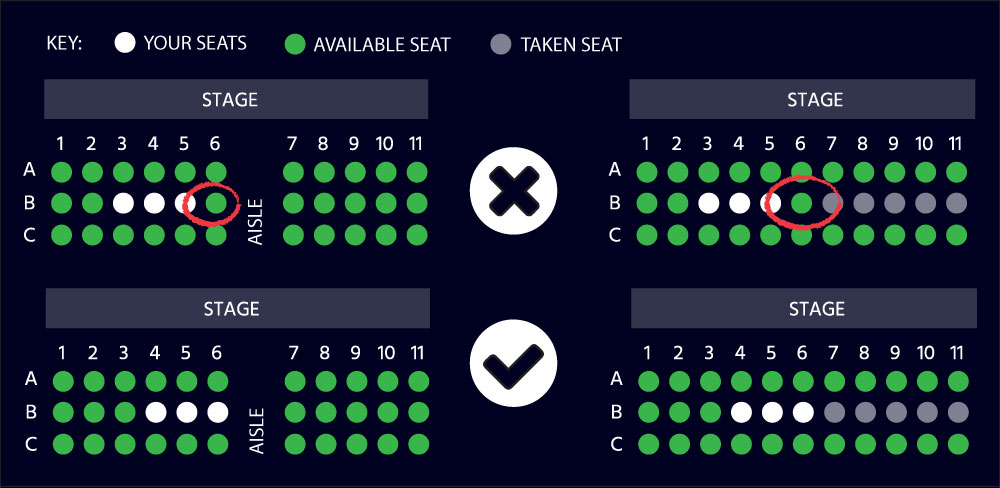Where
Malta Society of Arts, Republic Street, Valletta, Malta View map
Celebrate the magic of the holidays with a joyful evening of dance-inspired piano music, as Jovana Vakic and Jeremy Coleman join hands (almost literally) to present a special piano duet recital at the Malta Society of Arts, Valletta, on the evening of Saturday 13th December 2025.
Good news! There is currently an offer on this event.
10% off Bundles of 5 . Enjoy a 10% discount when buying 5 tickets.
The offer will be applied once you choose your tickets, and then proceed to the next page.
Refundable Booking Available
Select Refundable Booking at checkout to get a full refund in case you are unable to attend this event (sickness included). T&Cs apply.
Minimum Age
5+
Tickets
When
Saturday, 13 December 2025 at 19:30
Loading seating plan


Description
PROGRAMME
Hungarian Dances (selection) Johannes Brahms (1833-1897)
Nos. 1, 3, 4, 5 & 6
German composer and pianist Johannes Brahms first encountered Hungarian-Gypsy folk music (as it was then understood) via his friend the violinist Ede Reményi in the early 1850s. Over several decades Brahms would compose a total of 21 so-called Hungarian Dances, his distinctive interpretation of the style having probably developed through semi-improvised performances in informal social settings. Already during Brahms’s life, his Hungarian Dances were phenomenally popular owing to the publication of the first two books (nos. 1 to 10) in 1869 for piano duet (four hands) which appealed to the booming amateur market for sheet music and domestic music-making. Tonight we’ll be sharing a selection of Dances from Books 1 and 2, including some that also became famous through the composer’s own orchestral versions.
3-Day Mix Eleanor Alberga (b.1949)
Composed and first performed in 1991, British composer Eleanor Alberga’s 3-Day Mix represents the fourth and final in her series of piano-based works that draws on Afro-Caribbean musical influences. The title of this work alludes to the sheer speed at which Alberga composed it - that is, in just 3 days! Consisting of a single, continuous movement, the work has a close relationship with jazz idioms and at the same time may be understood as a response to the aesthetics of minimalism. After a brief introduction, the music plunges into an unstoppable though constantly evolving pulse, mostly in five-eight time, and while there is no ‘programmatic’ element in the work, listeners will enjoy the cumulative effect of an irresistible buoyancy and drive.
The Nutcracker Suite Pyotr Tchaikovsky (1840-1893), arr. Eduard Langer
I) Overture in Miniature
II) Character Dances
i) March
ii) Dance of the Sugarplum Fairy
iii) Russian Dance (Trepak)
iv) Arabian Dance
v) Chinese Dance
vi) Dance of the Reed Pipes
III) Waltz of the Flowers
The result of a protracted and difficult collaboration between Pyotr Tchaikovsky, theatre director Ivan Vsevolozhsky and choreographer Marius Petipa and first performed at the Mariinsky Theatre, Saint Petersburg, in December 1892, the classic fairy-tale ballet The Nutcracker has been a mainstay of Christmas holiday traditions since at least the mid-20th century. But even before the curtain opened on the first staged performance of the ballet, Tchaikovsky’s music had already been heard in the form of a concert Suite. The piano duet arrangement of that Suite will be the final work on tonight’s programme. The playful, trinketlike Overture is followed by a series of ‘characteristic dances’ largely taken from the scene in Act 2 of the ballet set in the magical ‘Confiturenburg’ (or ‘sweetie kingdom’). The Suite concludes with the joyful and melodically abundant ‘Waltz of the Flowers’.
Minors and students, please prepare your student ID to show at the entrance.



